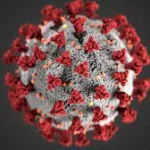Toronto, Canada – Researchers at the University of Toronto’s Institute of Biomedical Engineering have discovered that studying blood flow in leg muscles may help detect cardiovascular disease earlier than current standardized tests. This breakthrough could lead to earlier treatment and significantly improved patient outcomes.
While advanced medical imaging techniques have improved the detection of heart-specific issues like tissue stiffening or scarring, these methods often miss early signs of cardiovascular trouble in other parts of the body.
Prior studies have suggested that poor blood flow regulation in leg muscles may be an early indicator of heart-related problems, potentially explaining symptoms such as fatigue or difficulty exercising.
A New Approach to Diagnosing Heart Failure
“Our study shines a light on an important gap in how we detect HFpEF before the heart becomes irreversibly damaged,” said Professor Hai-Ling Margaret Cheng, a senior researcher at the Institute of Biomedical Engineering.
HFpEF, or heart failure with preserved ejection fraction, is a growing global health concern. This condition progresses silently, often showing minimal symptoms until it reaches an advanced stage, making treatment more difficult.
“Our work suggests that vascular changes in leg muscle could serve as an earlier, more accessible warning sign of the disease,” Cheng explained.
Breakthrough Research and Findings
The study, published in Discover Medicine, utilized a specialized MRI technique to monitor how blood vessels respond to stress. Researchers applied this method to a preclinical model of diabetes-induced HFpEF, assessing blood flow changes in both the heart and leg muscles.
Their findings were striking—problems in blood flow regulation in the leg muscles of diabetic subjects appeared months before similar issues were detected in the heart. This suggests that monitoring leg muscles could provide an earlier diagnosis of HFpEF than traditional heart-focused assessments.
“Our results show that by looking at blood flow in the legs, we could detect problems much sooner than we would by focusing only on the heart,” said lead researcher Sadi Loai, who completed his Ph.D. in biomedical engineering at the University of Toronto. “This could make a big difference in how we diagnose and treat this condition.”
Future Implications and Next Steps
Professor Cheng highlighted the next phase of the research: clinical testing in human patients with HFpEF risk factors.
“The next step is to test human patients with the risk factors for HFpEF and determine if our MRI platform can indeed identify the disease earlier than conventional diagnostic methods,” she said.
The ultimate goal of the study is not only to enable earlier detection of the condition but also to explore new avenues for treatment. As HFpEF becomes the most common form of heart failure, developing better diagnostic tools remains a top priority for researchers and healthcare professionals worldwide.
Disclaimer: The findings discussed in this article are based on preclinical models and have not yet been validated in human studies. Individuals concerned about heart failure or cardiovascular disease should consult a medical professional for appropriate diagnosis and treatment.











